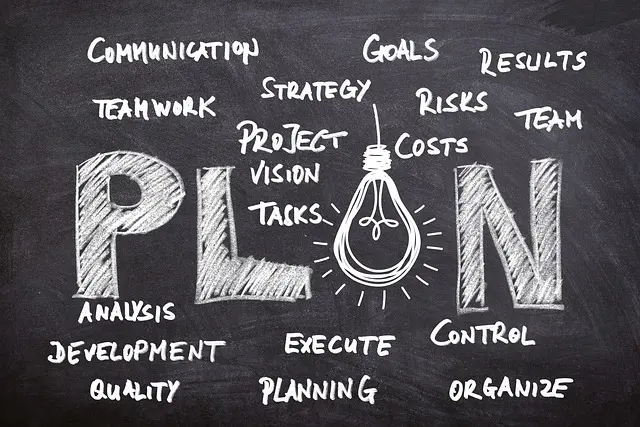
Understanding the essay prompt
One of the key elements in writing a successful essay is understanding the essay prompt. It is important to take the time to carefully read and analyze the prompt to ensure that you fully comprehend what is being asked of you. Pay attention to the keywords in the prompt, such as ‘analyze’, ‘compare’, ‘discuss’, or ‘evaluate’. These keywords provide you with important clues about what the prompt is asking you to do. For example, if the prompt asks you to ‘analyze’, this means you need to examine the topic closely and present an in-depth analysis of its various components. On the other hand, if the prompt asks you to ‘compare’, you need to identify similarities and differences between two or more things. Understanding these keywords helps you to focus your response and develop a clear thesis statement.
Moreover, it is crucial to consider the context and the purpose of the essay prompt. Is it asking you to provide a critical analysis of a novel, argue a specific position, or examine a historical event? Understanding the context will help you tailor your approach and address the prompt effectively. Additionally, pay attention to any specific requirements or restrictions mentioned in the prompt, such as word limit or formatting guidelines. Taking these into account will ensure that you adhere to the guidelines and fulfill the prompt’s requirements. By thoroughly understanding the essay prompt and its various components, you lay a strong foundation for the rest of your essay and ensure that you stay focused on the task at hand.
Conducting thorough research
Conducting thorough research is an essential step in the essay writing process. Without adequate research, your arguments and evidence may lack depth and credibility. When conducting research, it is important to utilize reliable sources such as scholarly articles, books, and reputable websites. These sources should be current and relevant to your topic, providing a solid foundation for your essay. Additionally, don’t forget to take notes and record the necessary citation information to avoid plagiarism and ensure proper referencing in your essay.
In order to conduct thorough research, it is also important to consider multiple perspectives and viewpoints on the topic. This will enable you to provide a well-rounded analysis and address potential counterarguments in your essay. Engage with sources that offer diverse opinions and interpretations, allowing you to critically evaluate the topic. Through conducting comprehensive research and considering various perspectives, you will be equipped with the necessary knowledge and evidence to build a strong and convincing argument in your essay.
Developing a clear and concise thesis statement
When writing an essay, one of the most crucial steps is developing a clear and concise thesis statement. This statement serves as the foundation for the entire essay, guiding the reader and providing a clear focus for your arguments. A thesis statement should be specific and directly address the essay prompt or question at hand. It should convey your main argument or position on the topic, giving the reader a preview of what to expect in the subsequent paragraphs. Crafting a strong thesis statement requires careful thought and analysis of the topic, ensuring that it effectively captures the essence of your argument. This statement should be placed at the end of your introduction paragraph, serving as a roadmap for the rest of your essay.
To develop a clear and concise thesis statement, it is important to conduct thorough research on the topic. This research will help you gain a deeper understanding of the subject matter, allowing you to formulate a well-informed and compelling argument. As you gather information, take note of relevant evidence and ideas that support your position. This will not only help you strengthen your thesis statement but also provide you with a solid foundation for your essay. Additionally, consider incorporating counterarguments into your thesis statement to demonstrate your understanding of different perspectives. By addressing opposing viewpoints, you can present a balanced and nuanced argument that is more persuasive to the reader. Overall, developing a clear and concise thesis statement requires thoughtful analysis and careful consideration of the evidence available.
Organizing your essay with a logical structure
One of the critical aspects of writing a strong essay is organizing it with a logical structure. A well-organized essay enhances the clarity of your ideas and makes it easier for readers to follow your arguments. To create a logical structure, start by outlining your main points and supporting evidence. This will help you establish a clear direction for your essay and ensure that each paragraph contributes to the overall coherence of your argument.
In addition to outlining, it is important to consider the order in which you present your ideas. Begin with a strong introduction that hooks the reader and provides an overview of your essay’s main points. Then, move on to the body paragraphs, each dedicated to a single main point, supported by relevant evidence and analysis. Finally, wrap up your essay with a concise conclusion that restates your thesis and summarizes your main arguments. By organizing your essay in such a way, you create a logical progression of ideas that strengthens your overall argument and engages your readers.
Crafting a compelling introduction
The introduction of an essay plays a crucial role in capturing the reader’s attention and setting the tone for the entire piece. It is essential to craft a compelling introduction that effectively engages the reader and introduces the main ideas of the essay. One effective strategy for crafting a compelling introduction is to start with a thought-provoking question or a captivating anecdote. By starting with a question, the writer can immediately engage the reader’s curiosity and encourage them to continue reading to find the answer or explore the topic further. Similarly, an intriguing anecdote can grab the reader’s attention and make them emotionally invested in the essay’s subject matter.
Another key element in crafting a compelling introduction is the inclusion of a clear and concise thesis statement. The thesis statement serves as the main idea or argument of the essay and provides direction for the reader. It should be strong, specific, and arguable, effectively summarizing the essay’s main points. By including a well-developed thesis statement in the introduction, the writer can establish their stance on the topic and guide the reader through the rest of the essay. Furthermore, a clear thesis statement helps the reader understand the purpose and focus of the essay, making the introduction more persuasive and engaging.
Providing relevant and well-supported evidence
Relevant and well-supported evidence is essential in any essay to enhance the credibility and strength of your arguments. When providing evidence, it is crucial to choose sources that are reputable, up-to-date, and directly related to your topic. Primary sources, such as research studies, interviews, or original documents, often hold greater weight than secondary sources. Additionally, statistical data, expert opinions, and real-life examples can further bolster your claims and persuade your readers.
To ensure that your evidence is well-supported, it is important to provide sufficient context and analysis. Simply presenting facts without interpretation can weaken the impact of your evidence. By explaining the significance and relevance of the evidence to your thesis statement, you can effectively guide your readers through your argument. Additionally, consider the potential biases or limitations of your chosen sources and acknowledge them to maintain objectivity. By providing relevant and well-supported evidence throughout your essay, you can demonstrate the depth of your research and strengthen the overall persuasiveness of your argument.
Analyzing and interpreting the evidence effectively
Analyzing and interpreting the evidence effectively is a crucial skill in essay writing. This process involves carefully examining the evidence gathered during research and making informed judgments about its relevance and meaning. By analyzing the evidence, you can uncover patterns, identify key arguments, and develop a deeper understanding of the topic at hand.
One important aspect of effective analysis is considering the source of the evidence. It is essential to evaluate the credibility and expertise of the sources you use in your essay. For example, when citing scholarly articles or peer-reviewed journals, you can rely on their credibility and expertise in the respective field. On the other hand, if you are using online sources, it is important to verify the credibility of the author or publication. By critically evaluating the sources, you can ensure that the evidence you include in your essay is reliable and trustworthy.
Incorporating counterarguments and addressing them appropriately
When writing an essay, it is important to incorporate counterarguments and address them appropriately. By doing so, you demonstrate a well-rounded understanding of the topic and engage in a thoughtful and nuanced discussion. By considering alternative viewpoints, you can strengthen your own argument and anticipate potential objections. By addressing counterarguments, you demonstrate credibility and respect for differing opinions. This approach also shows the reader that you have thoroughly considered the topic and are capable of presenting a balanced analysis. Therefore, it is crucial to carefully analyze the counterarguments and provide compelling evidence to support your own claims.
Writing clear and coherent paragraphs
When it comes to writing clear and coherent paragraphs, organization is key. Each paragraph should have a clear topic sentence that introduces the main idea of the paragraph. This allows the reader to easily understand what the paragraph will be about. Additionally, using transitional words or phrases, such as “furthermore” or “in addition,” can help to smoothly connect sentences within the paragraph and make the overall text flow more smoothly.
Moreover, it is important for the sentences within each paragraph to support the main idea. This can be achieved by providing specific examples, evidence, or explanations. Additionally, using appropriate transitions between sentences, such as “for example” or “in other words,” can help to clarify ideas and enhance the coherence of the paragraph. Overall, the goal is to create a seamless flow of information that guides the reader through the paragraph and makes the intended message clear and easily understandable. So, remember to prioritize organization and supporting details when writing clear and coherent paragraphs.
Editing and proofreading for clarity and grammar
Editing and proofreading are essential steps in the essay writing process. These steps ensure that your essay maintains clarity and adheres to proper grammar rules, making it easier for readers to understand and engage with your ideas.
When editing for clarity, it is important to review each sentence and paragraph to ensure that they convey your intended meaning. Look for any awkward or confusing language and revise it to make it more straightforward and concise. Additionally, check for inconsistent or repetitive ideas and remove any unnecessary details that may distract readers from your main argument.
Grammar is also crucial in conveying your message effectively. Pay attention to sentence structure, verb tense, subject-verb agreement, and punctuation. Use proper grammar rules to avoid confusion and misinterpretation. Proofread your essay carefully, checking for any spelling errors or typographical mistakes. Remember, a well-edited and proofread essay demonstrates your attention to detail and enhances your overall writing credibility.












